Ticks in dogs - How to protect your dog properly
Tick season myth
Especially in spring, when the climate becomes milder, many dog owners think about tick prophylaxis again. It is a widespread misconception that now is the "tick season". As, due to climate change and the emergence of different tick species, the risk of a tick bite exists almost all year round. Seasonally, the parasites are naturally more active in spring, summer and autumn than in winter. The recommendation is now to protect your four-legged friend from February to November with the help of suitable means to prevent the transmission of diseases.
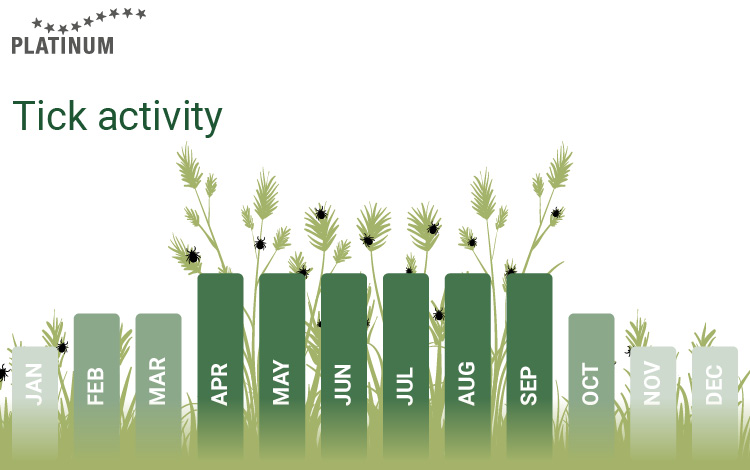
Ticks can transmit various diseases
Tick bites are usually inconspicuous and often
go undetected due to the dense coat of a dog's fur. This is dangerous because
they can transmit a variety of dangerous diseases that can cause serious
consequential damage or lead to death of the dog if not treated. Lyme disease,
TBE and ehrlichiosis are now well-known diseases transmitted by ticks. However,
due to climate change, foreign tick species are increasingly arriving in
Central European regions. Babesiosis, for example, which is transmitted by the
alluvial tick, was originally a foreign disease. Now, this tick species, and
thus also the disease, is increasingly coming to us. No matter which of the
diseases it is, the first symptoms are often non-specific. Therefore, it is
difficult for laypeople to associate the symptoms with a tick bite.
Lyme disease in dogs
Lyme disease can be transmitted to both humans and dogs. It is the most common disease transmitted by ticks in Germany. Not all ticks carry Lyme disease-transmitting bacteria and thus pose a risk of infection. However, if an infected tick bites, it transmits the Borrelia bacteria to the host via its saliva approximately 16-24 hours later. In humans, there is often redness around the sting site, but this is absent in dogs and makes detection even more difficult. Non-specific symptoms that occur weeks or even months after the tick bite are:
- Fatigue / apathy
- Loss of appetite
- Fever
- Swelling of the lymph nodes
- Painful and swollen joints
In the long term, Lyme disease in dogs can lead to chronic inflammation of the joints, resulting in variable lameness.
To avoid this, you should consult your vet immediately if you suspect your dog has Lyme disease. A Borrelia antibody test is carried out by taking a blood sample to determine whether your four-legged friend has already had contact with Borrelia. In combination with the symptoms mentioned above, this is a pretty clear indication of Lyme disease. If the diagnosis is made promptly, the vet can begin therapy, which usually involves the use of antibiotics and anti-inflammatory drugs.
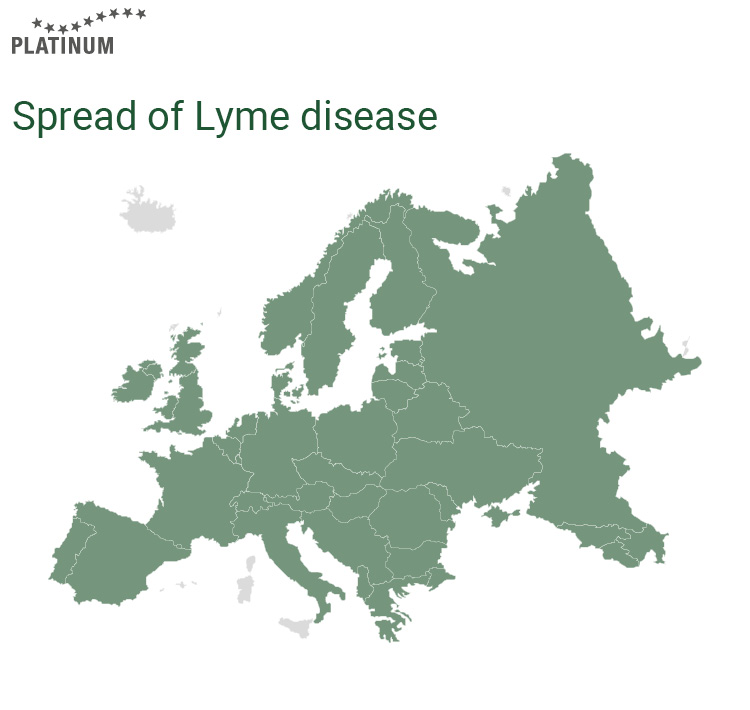
TBE in dogs
Less common, but no less dangerous, is tick-borne encephalitis, or TBE for short. Fortunately, far fewer ticks carry the pathogen. The viral disease is also transmitted via the tick saliva. However, transmission is immediate, so prompt removal is not sufficient to protect the dog from TBE. Dogs are less likely to contract TBE than humans because they often develop antibodies against the virus. If an infection with an acute course of the disease does nevertheless occur, it usually becomes noticeable through the following symptoms:
- Fever over 40°C
- Paralysis of the limbs
- Wobbly gait
- Increased painfulness (especially in the neck and head area)
- Behavioural changes (aggressiveness and apathy)
- Seizures
A clear diagnosis of TBE requires complicated examinations by the vet, as a mere blood test for antibodies is not a sufficient indication. The therapy is also very complex and unfortunately only leads to a cure in rare cases. Therefore, the right prophylaxis to protect the dog from the disease is enormously important.
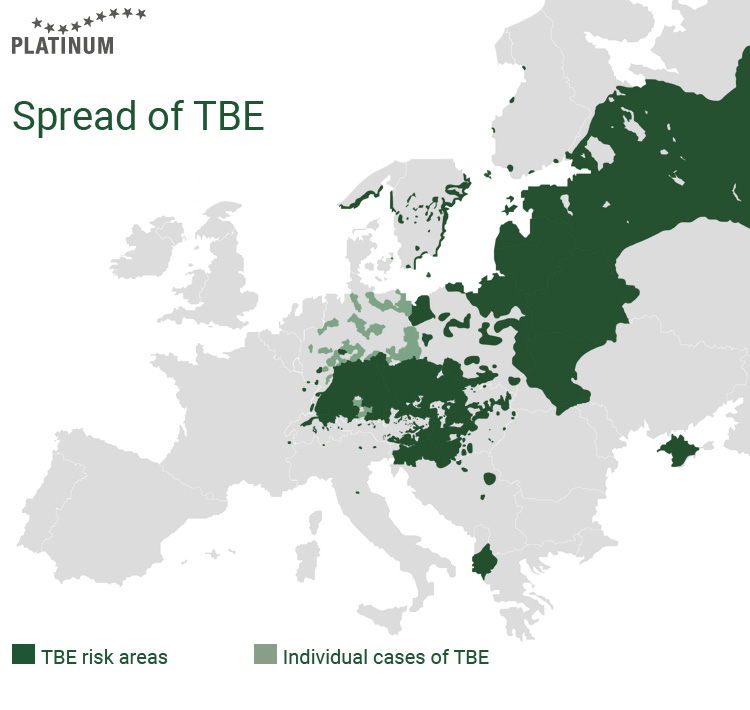
Ehrlichiosis
The pathogens of ehrlichiosis, which is one of the Mediterranean diseases, are also transmitted via the saliva of infected ticks. Originally, the brown dog tick, which is considered a vector, was only found in the regions around the Mediterranean. Through travel, however, it was also carried to more northern areas, such as certain parts of Germany. The bacteria are transmitted to the dog within the first three hours and infect the white blood cells. After about 1-3 weeks, the first symptoms can be seen as follows:
- Fever
- Weakness, fatigue and apathy
- Lymph node swelling
- Small skin or mucous membrane bleeding e.g. in nose and mouth
- Vomiting (sometimes)
- Breathing problems
- Reddened conjunctivae
As the disease is often not recognised at this stage, the symptoms subside and the dog appears healthy again. Now it depends on whether the ehrlichiosis heals spontaneously or becomes chronic. In chronic ehrlichiosis, which can start after weeks or months, there are further non-specific and unrelated symptoms. Diagnosis is made by special laboratory tests using DNA or antibodies or by detecting infected white blood cells. Similar to Lyme disease, the vet tries to prevent the bacteria from multiplying by treating it with antibiotics. If the dog is already chronically ill with ehrlichiosis or infected with other Mediterranean diseases at the same time, the chances of recovery are unfortunately low.
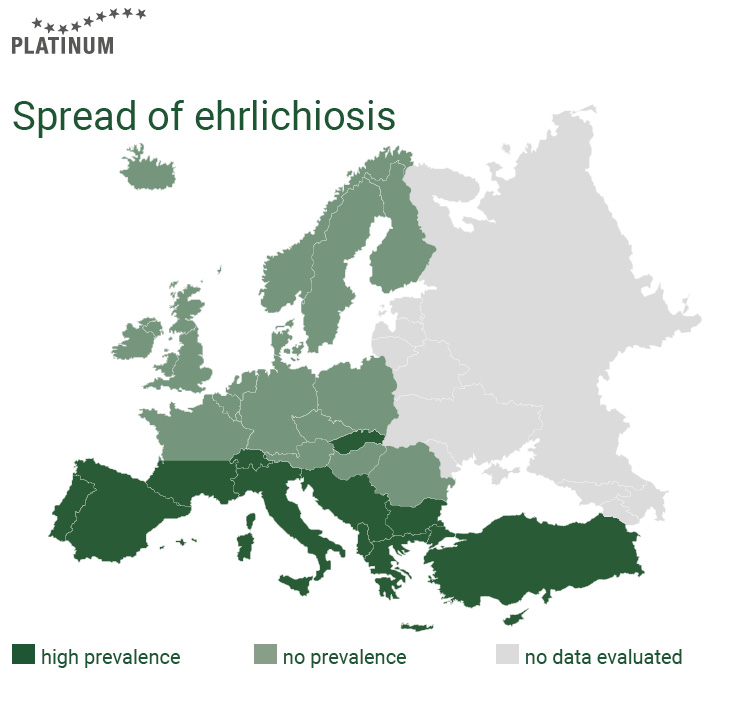
What helps against ticks in dogs?
Special tick protection preparations after consultation with the vet
Natural remedies against ticks
Natural remedies for tick prophylaxis are often recommended, which are also said to be more tolerable for your beloved four-legged friend. However, the effect of these remedies varies from animal to animal. With natural preparations, regular intake is very important so that they can provide protection. Kown natural remedies are:
- Coconut oil and black cumin oil
- Preparations based on yeast and B vitamins (frequent daily intake required)
- Herbal drops (daily application)
Collars such as amber collars or badges made of certain materials are also advertised as repelling ticks. However, the effect of such accessories is controversial.
Treats against ticks in dogs
Looking for the answer to the question “What is best?” against ticks on dogs?” you now also come across snacks or anti-tick treats with ingredients to help repel ticks. Various agents are added to these anti-tick treats, which are then absorbed by rewarding the dog during training or in everyday life. This is extremely practical and easy to use, as you don't have to give your dog a tablet that he may not like, or apply a spot-on or a natural single agent such as coconut oil, which limits daily interaction, such as petting . However, the effectiveness of the snacks and treats or the agents added to the snacks or treats varies from animal to animal.
But you should also pay attention to the composition of snacks or treats against ticks if you value natural ingredients that are good for your dog. Plant-based active ingredients such as coconut oil, black cumin oil and cistus herb are natural alternatives to chemical additives.
Chemical preparations
| Preparations | Application | Duration of the effect |
|---|---|---|
| Spot-on preparations | Regular application of drops to the skin on the neck of the dog or as a large spray on the fur | Approx. 1 month |
| Tick collars |
Permanent wearing as an additional collar | Depending on manufacturer, 2 to 8 months |
| Tablets | Oral intake, tablets must be swallowed whole | 2 to 3 months |
Natural remedies
| Remedy | Application | Frequency |
|---|---|---|
| Coconut and black cumin oil | Regular rubbing of the fur with a small amount, or addition to food | Daily application |
| Remedy based on yeast & B vitamins | Intake as a food supplement | Daily application |
| Plant-based drops | Regular application to skin and fur | Daily application |
| Snacks or treats against ticks | Intake as a snack during training or as a reward in everyday life | Daily application |
Dog fur inspection and regular grooming
When checking the fur, start at the head of your four-legged friend and carefully work your way down their body to the tail. Don't forget to check your dog's belly for ticks as well.
The advantage of the sweep is that you can also detect ticks that are not attached and remove them without any effort. Removing ticks that are already attached to the dog requires some dexterity and, above all, the right tools.
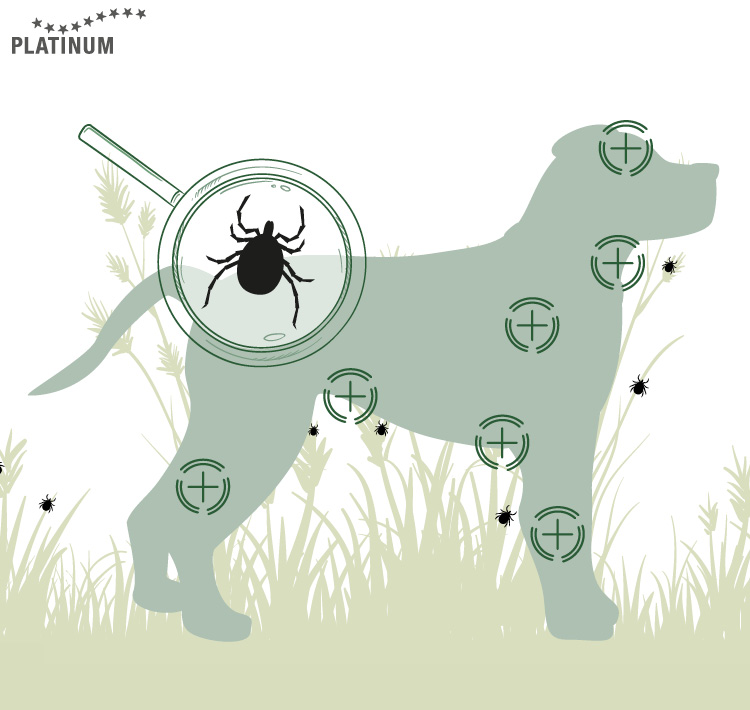
Further prophylaxis tips to protect your dog
There are almost no vaccinations available at present. You can only have your four-legged friend vaccinated against certain types of Lyme disease. However, this vaccination unfortunately does not cover all variants of the disease. There is no vaccination protection for dogs against TBE and ehrlichiosis. You can discuss with your trusted vet whether a vaccination makes sense for your dog.
Frequently asked questions about ticks in dogs
What is the white tick?
What helps best against ticks in dogs?
Can diseases such as Lyme disease, TBE and ehrlichiosis be transmitted from dogs to humans?
Where can I buy tick repellent?
Since there are now a variety of prophylactic remedies, you can find them in different places. Tablets and special spot-on preparations must and should be obtained from your vet. Some preparations or even collars can also be purchased on the internet, in pharmacies or in pet shops. Natural remedies and treats for outdoor activities can be purchased in many places.
Where do dogs get ticks?
Product recommendations
The benefits of PLATINUM dog food
- PLATINUM uses a unique preparation method called FSG, which offers numerous advantages compared to conventional dog food.
- Dog food prepared with FSG is gently cooked only in its own meat juice and is therefore nutrient-rich like BARF, excellent for building muscles and also extra tasty for your dog.
- With at least 70% fresh meat in the dry dog food and 83% fresh meat or fresh fish in the wet dog food, PLATINUM places great value on a composition of the food that is adapted to the needs of dogs.
- The declaration and composition of dog food prepared with FSG is tested regularly and independently by ELAB Analytik GmbH (formerly TÜV SÜD ELAB) — for canine health protection.
- PLATINUM is generally very well accepted by dogs of all breeds and ages. Even four-legged friends with sensitive digestion or intolerances usually tolerate PLATINUM dog food well.
- All products are free of soya, GMOs and gluten. In addition, no flavour enhancers, attractants, odourants or colourings are used.
- Over 100,000 positive customer reviews at Trusted Shops speak for themselves!


 Deutsch
Deutsch
 English
English
 Nederlands
Nederlands
 Français
Français

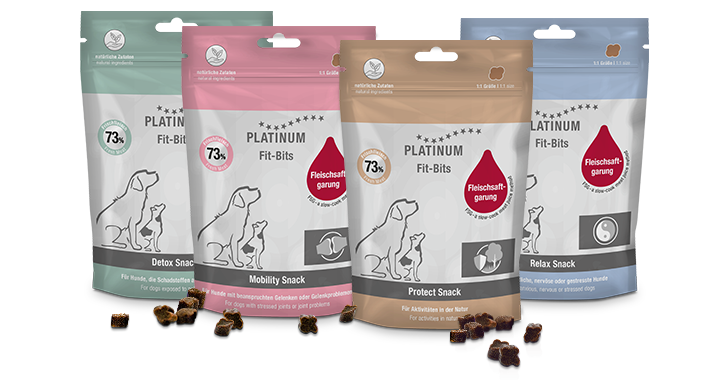




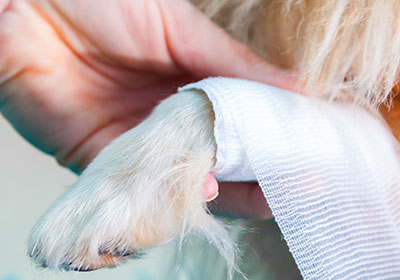


.png)
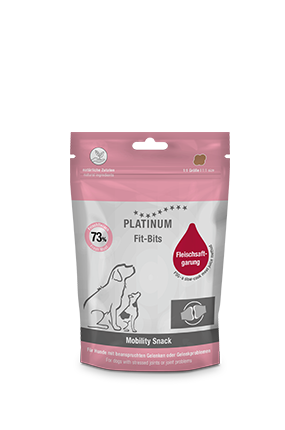
.png)
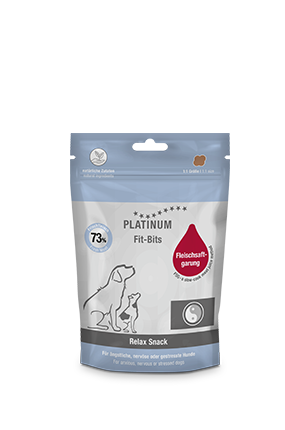
.png)